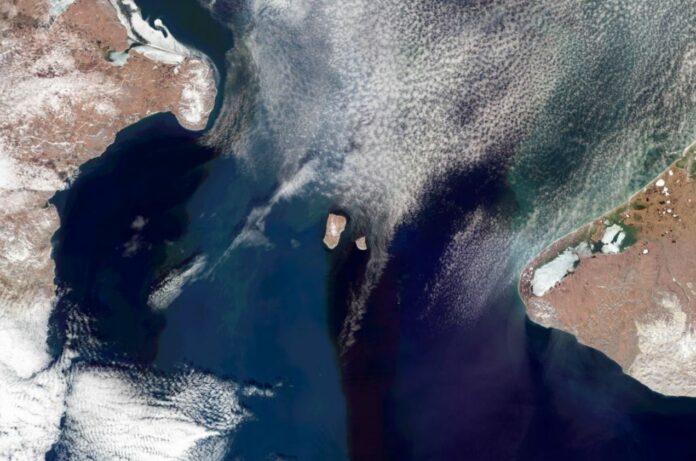The Bering Land Bridge, which connects Asia to North America, did not appear until around 35,700 years ago, or less than 10,000 years before the peak of the last ice age also known as the Last Glacial Maximum, according to recent research that reconstructs the history of water level in the Bering Strait.
The new research, which was released in Proceedings of the National Academy of Sciences, shows that the growth of the ice sheets—and the subsequent drop in sea level that resulted—took place surprisingly quickly and much later in the glacial cycle than earlier studies had suggested.
According to corresponding author Tamara Pico, the findings suggest “that more than 50 percent of the global ice volume at the Last Glacial Maximum grew after 46,000 years ago.
This means that there was a large delay in the development of ice sheets when global temperatures declined, which is essential for understanding the feedbacks between climate and ice sheets.
During ice ages, global sea levels tend to decrease due to the increased amount of water that becomes trapped in massive ice sheets. However, it has been difficult to accurately determine the timing of these events. During the Last Glacial Maximum, which lasted around 26,500 to 19,000 years ago, huge portions of North America were covered by ice sheets. Beringia, a large geographical tract that reached from Siberia to Alaska and supported herds of horses, mammoths, and other Pleistocene animals, was exposed when sea levels dropped dramatically. Around 13,000 to 11,000 years ago, when the ice sheets melted, the Bering Strait flooded again.
The new discoveries are significant in terms of human migration since they shorten the period between the opening of the land bridge and human arrival in the Americas. Although the exact time of human migration into North America is still unclear, certain research indicate that humans may have resided in Beringia throughout the duration of the last ice age.
“People may have started going across as soon as the land bridge formed,” Pico adds.
The new study looked at nitrogen isotopes in sediments on the seafloor to find out when the Bering Strait was flooded in the last 46,000 years, letting water from the Pacific Ocean flow into the Arctic Ocean. The isotope analysis, which measured nitrogen isotope ratios in marine plankton fossils found in sediment cores from three different sites in the western Arctic Ocean, was headed by Princeton University’s Jesse Farmer, the study’s first author. Because the Pacific and Arctic waters have different amounts of nitrogen, Farmer was able to find a nitrogen isotope signature that showed when water from the Pacific went into the Arctic.
Sea level specialist Pico compared Farmer’s findings to sea level models that assumed varying rates of ice sheet development.
“The exciting thing to me is that this provides a completely independent constraint on global sea level during this time period,” Pico adds. “Some of the ice sheet histories that have been proposed differ by quite a lot, and we were able to look at what the predicted sea level would be at the Bering Strait and see which ones are consistent with the nitrogen data.”
She said that the results back up recent studies that show that sea levels were much higher before the Last Glacial Maximum than was thought before. During the Last Glacial Maximum, the world’s oceans dropped by around 130 meters (425 ft) on average. But the actual sea level at a place like the Bering Strait depends on things like how the weight of the ice sheets changes the shape of the Earth’s crust.
“It’s like punching down on bread dough—the crust sinks under the ice and rises up around the edges,” Pico adds. “Also, the ice sheets are so massive they have gravitational effects on the water. I model those processes to see how sea level would vary around the world and, in this case, to look at the Bering Strait.”
The results of this study suggest that there is a complex connection between climate and the amount of ice on a global scale, and they may open up new opportunities for research into the factors that drive glacial cycles.
Source: 10.1073/pnas.2206742119
Image Credit: Orbital Horizon/Copernicus Sentinel Data 2018/Gallo Images/Getty Images
